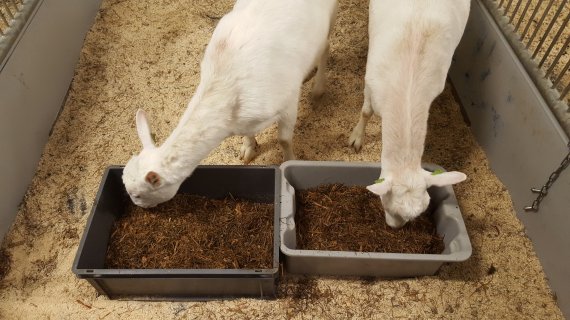© Anton Sonnenberg
Large amounts of straw are available around the world that are barely used – if at all. Until recently, it was customary in China to burn the rice and wheat straw on the fields, which caused damage to the environment. In countries such as Thailand and Brazil, the bagasse – the residue of cane sugar production – is thrown away or burned for power production. However, this biomass is suitable as cattle feed if the nutritional value of the straw can be increased. The latter is achievable using fungi, as was revealed by the PhD research of Nazri Nayan.
Polysaccharides
Plant cells contain cellulose and hemicellulose, both polysaccharides (sugars) which ruminants can break down rather well. However, the plant cells also contain five to ten percent lignin, and this lignin causes the plant cells to be hard to digest for ruminants. To increase the nutritional value, that lignin must first be decomposed. This can be done using chemicals, but it is also possible through organic means.
In nature, lignin can only be decomposed by a specific group of fungi, the white-rot fungi, says John Cone, Nayan’s copromotor at the Animal Nutrition Group. The oyster mushroom and shiitake are two well-known examples of white-rot fungi. Nayan tested various white-rot fungi from the fungi collection of copromotor Anton Sonnenberg of Wageningen Plant Breeding. He discovered that there are significant differences in the decomposition of lignin between fungi strains and genera within a family.
Breeding
Nayan was also able to measure the decomposition of lignin very precisely. Cone: ‘We closely collaborate with the Food Chemistry Group, which has very advanced equipment to measure lignin with high precision.’ Now that it has become clear that the decomposition of lignin greatly varies per type of fungus, the path is opened to breed fungi for this specific task, says Cone. The fungi group within Plant Breeding is one of the few groups in the world that is able to do this.
During the lab experiments, the fungi decomposed the lignin within a time frame of five to seven weeks. A second PhD candidate, Lei Mao, is investigating the conservation of the straw after treatment with the fungi. A third PhD candidate, Eli Ratni, is studying the nutritional value of the straw for cows and goats. There are also plans to test the applicability of the fungi-treated straw in practice in several countries. ‘We are working on projects in Vietnam, China and Brazil’, Cone says.
Methane
Cone also sees other opportunities. ‘Dutch companies currently produce methane and ethanol from starch, that is from food crops. Using these fungi, we could perhaps also process residual flows in order to make the cellulose from sources such as garden waste available for methane production. I expect this would produce additional resources for the industry.’

